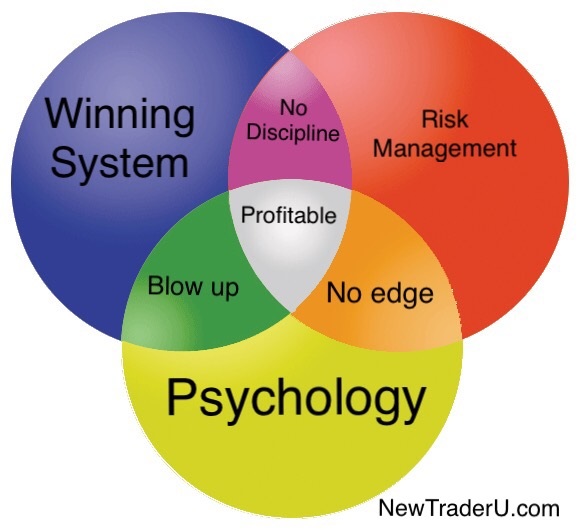Reblog: Profitable Trading Explained

If you have a winning system with the right risk management you can still fail to be profitable if you do not have the right trading psychology to trade it with discipline.
If you have a winning system with the right trading psychology you can still fail to be profitable by blowing up during a losing streak without the right position sizing and risk management.
If you have the right risk management and trading psychology you can still fail to be profitable because you are trading with no edge because you don’t have a winning trading system.
Profitable trading requires three dynamics: a winning price action trading system with an edge, proper position sizing with risk management, along with the right trading psychology to allow you to trade your process with discipline.
The original post is authored by Steve Burns of newtraderu.com and is available here.






